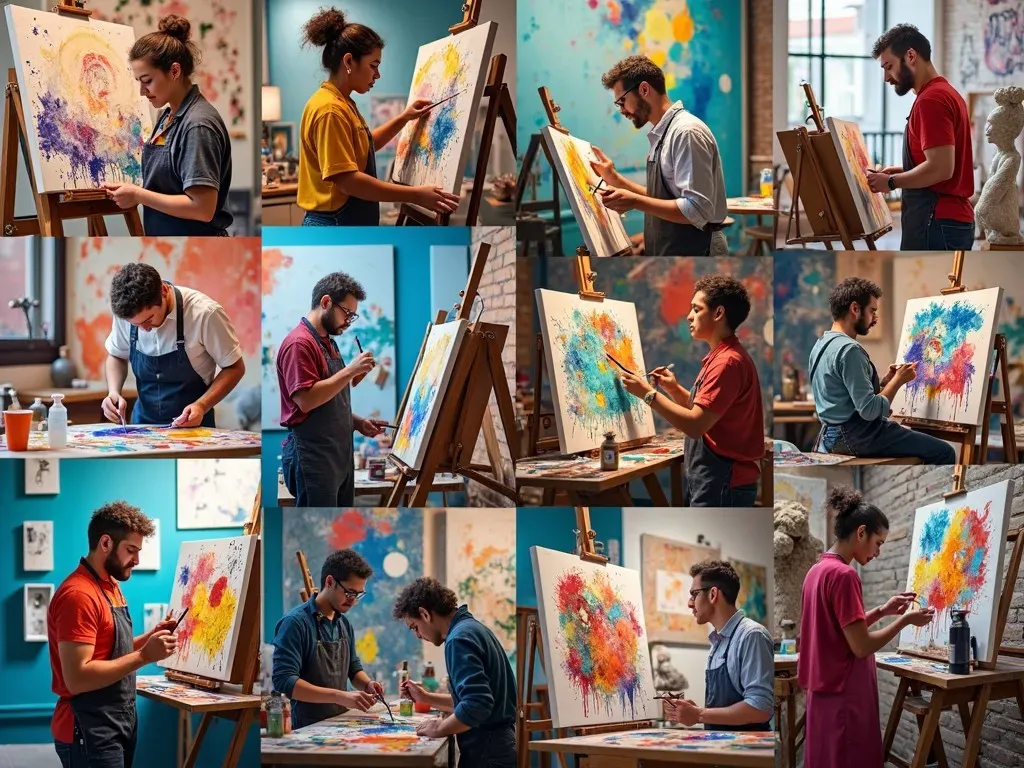Famous artists today have not only captured the essence of contemporary culture through their work but also redefined the parameters of what art can be in the modern world. This article explores the creative journeys and contributions of influential artists who are shaping the art landscape while also observing the relationship between their art and current social movements.
Contemporary Artists Making Their Mark
The 21st century has seen an explosion of creativity across various mediums—from painting and drawing to sculpture and digital art. Here’s a closer look at some of the current famous artists known for their unique styles and groundbreaking concepts.
Famous Artists in Painting
| Artist Name | Notable Work | Style |
|---|---|---|
| Banksy | “Girl with Balloon” | Street Art |
| Yayoi Kusama | “Infinity Mirror Rooms” | Installation Art |
| Kehinde Wiley | “Portrait of Barack Obama” | Portraiture |
| Frida Kahlo | “Self Portrait with Thorn Necklace” | Surrealism |
| Takashi Murakami | “Flower Ball” | Superflat |
Each of these artists has made a significant impact, using their platforms to share messages that resonate with larger social issues, thus integrating art with activism.
The Resurgence of Drawing Artists
In the world of contemporary art, drawing is being redefined. Many famous drawing artists are experimenting with new Techniques and pushing the boundaries of traditional methods.
Notable Drawing Artists
- David Hockney – Renowned for his vibrant and innovative iPad drawings.
- Julie Mehretu – Creates complex multi-layered drawings that address global issues.
- Robert Rauschenberg – Known for merging various media including drawing and painting.
| Drawing Artist | Signature Style | Noteworthy Exhibition |
|---|---|---|
| David Hockney | Colorful Landscapes | “A Bigger Picture” |
| Julie Mehretu | Abstract Maps | “Jettison” |
| Robert Rauschenberg | Fusion of media | “Erasing the Rules” |
Through these unique styles, the artists reflect the complexities of modern society, creating art that challenges viewers to think critically about the world around them.
The Influence of Social Media on Artists Today
Social media has changed the way artists engage their audience. Platforms like Instagram and TikTok have become critical for artists to showcase their work, gain visibility, and connect with fans worldwide. According to a survey by Artsy, approximately 78% of artists use social media as their primary form of communication with potential buyers and followers.
Impact Stats
- 70% of young collectors discover art through social media.
- Art sales via online platforms have increased by nearly 30% year-over-year.
- 49% of people aged 18-30 say they are influenced in their purchasing decisions by what they see on social media.
Noteworthy Trends among Living Artists
Present-day artists are increasingly incorporating global themes such as climate change, immigration, and social justice into their work. This transformation reflects a broader societal change, wherein art increasingly serves as a response to contemporary challenges.
- Amoako Boafo: Known for his vibrant portraiture that highlights the identity of the African diaspora.
- Nan Goldin: Her poignant photographs capture the struggles faced by marginalized communities.
- Lauren Halsey: Creates installations that challenge urban displacement and celebrate African American culture.
FAQ about Famous Artists Today
Who are the most famous contemporary artists?
The most famous contemporary artists today include Banksy, Yayoi Kusama, Kehinde Wiley, and Takashi Murakami.
How does social media impact artists today?
Social media allows artists to reach a wider audience, gain visibility, engage directly with fans, and sell artworks through online platforms.
What themes do contemporary artists explore in their work?
Many contemporary artists explore themes like identity, social justice, climate change, and globalization.
Can you provide examples of notable living painters?
Notable living painters include David Hockney, Julie Mehretu, and Georgia O’Keeffe, who all have significantly shaped contemporary art.
Are there any resources to find trending artists?
Websites such as Artsy provide up-to-date information about influential artists and their latest works.
Reference Video
Conclusion: Navigating the Art World Today
Famous artists today harness a diverse range of styles, mediums, and messages to engage with their audience. From established icons to emerging talents, their work continues to inspire, provoke, and challenge societal norms. As these artists harness the power of social media and respond to contemporary issues, they mark a significant era in art history—one characterized by innovation, connection, and a bold approach to storytelling.
Incorporating art into social dialogues is no longer just an option for contemporary artists; it has become a vital component of their practice, resonating with audiences who seek art that reflects their realities.
